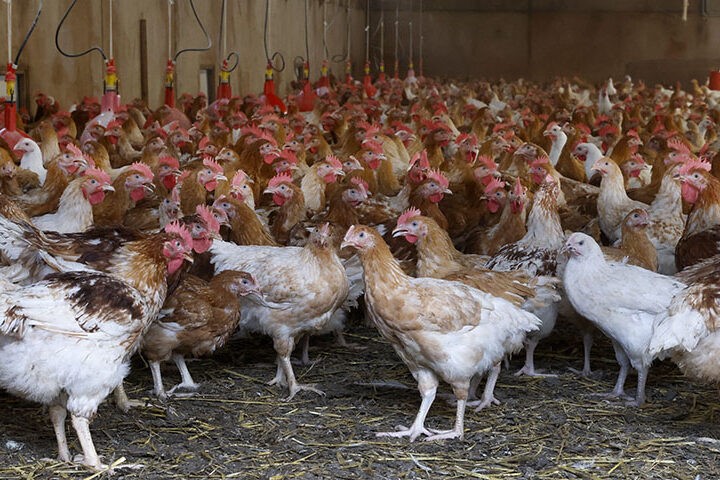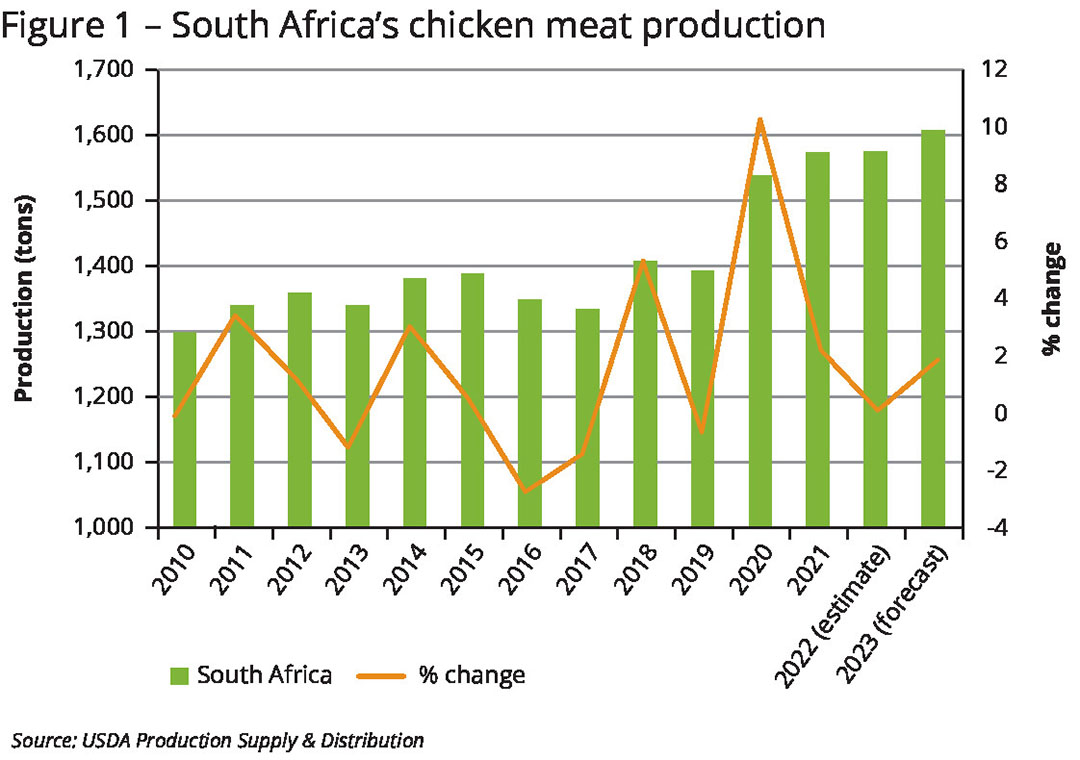South Africa’s chicken meat production to increase in 2023

Chicken meat production will increase in 2023 by 2% due to economic recovery, the normalisation of feed costs, an improvement in the animal health situation and greater investment by the industry, with high revenue anticipated for market year 2022.
The expected increase in chicken meat consumption is being driven by the increasing price of other proteins, like beef and lamb. In the wake of this, consumers will divert their attention to chicken to meet their protein needs.
Chicken meat production is forecast to return to the growth trend seen prior to Covid-19 and the subsequent economic downturn (Figure 1). South African poultry companies are expected to yield significant profits in 2022, largely due to the higher prices of poultry internationally as well as domestically. If companies invest profits in production in 2023, the industry can resume its growth trajectory.

The South African Poultry Association (SAPA) has invested 1.14 billion rand (US$ 78 million) since 2019 in the expansion of production facilities to support new commercial farmers. According to SAPA, these investments have yielded an increase in production of 1 million additional birds per week.
SAPA’s goal is to enable the industry to increase production by a minimum of 10% in the period of 2019-2023. Despite these investments in the sector, the pace of growth seen in previous years has been slowed by the recent increase in international feed prices, poor economic growth and structural constraints.
Chicken meat production in 2022 remained mostly flat at 1.5 million tonnes, largely driven by the high cost of inputs that was exacerbated by Russia’s invasion of Ukraine.
Beef and lamb driving chicken meat
The increasing prices of beef and lamb are expected to increase the consumption of chicken meat to higher levels. Chicken is by far the most popular meat in South Africa. It is more affordable compared to other meats, which may push middle-class consumers towards this protein source.
Although pork can compete with chicken in terms of affordability it is not consumed by a large part of the population for religious reasons. Traditionally, pork has been consumed by more affluent consumers in South Africa, with a substantial share in processed form. A significant share of pork consumption is attributed to the food service sector with sales of ribs and bacon.
Imports to increase slightly in 2023
Imports are forecast to increase by 3% in 2023 to meet local demand as global exportable supplies recover. Local production remains insufficient to meet demand. The impact of increased tariffs and the introduction of Anti-Dumping Duties (ADDs) imposed on poultry from Brazil, Poland, Ireland, Denmark and Spain currently scheduled for mid-2023, will limit the supply of affordable imports in the second half of the year.
However, this will be more than offset by the growth in global exportable supply and a surge in buying prior to the imposition of ADDs on Brazil, the main exporter to South Africa.
On the other hand, bone-in poultry from the United States is currently subject to ADDs that are set to expire on 23 November 2022. However, the United States currently exports bone-in chicken meat to South Africa under a Tariff Rate Quota that exempts a set volume from ADDs. With ADDs expiring in November, imports of US products may increase slightly, depending on market conditions.
Demand to push exports
Post-estimates are that chicken meat exports for 2022 will remain flat, as recurrent HPAI outbreaks have hindered plans to reach out to international export markets. HPAI means that South Africa is currently unable to export to places like the European Union, despite its Southern African Development Community, and European Union Economic Partnership Agreements.
However, South Africa’s chicken meat exports for 2023 will increase by 4% as the animal health situation improves and demand from Southern African markets remains strong. Poultry continues to be a more affordable protein source for the country’s major markets in Africa. The South African industry will continue to invest in growth by focusing on export, targeting Southern African markets.
The information in this article was taken from a USDA report.
Join 31,000+ subscribers
Subscribe to our newsletter to stay updated about all the need-to-know content in the poultry sector, three times a week. Beheer
Beheer











 WP Admin
WP Admin  Bewerk bericht
Bewerk bericht